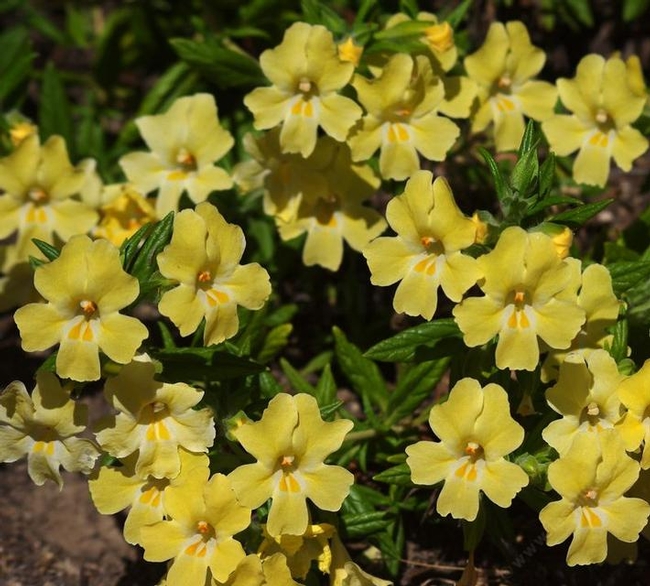Advice for the Home Gardener from the Help Desk of the
UC Master Gardener Program of Contra Costa County
Client's Request: I'm trying to grow Mimulus in ground and in pots the last several years and not having any success. Would you please provide me guidance. Thank You.

diplacus-longiflorus
To successfully grow most flowers, it is important to follow these basic guidelines:
- Choose the right plant for where you plan to plant.Use the best and most suitable soil for your plant.
- Read the tag for the watering requirements. Some plants need water often, while others require it only infrequently.
- Make sure your plant has the right light exposure.
- Remove faded flowers to encourage more flowering. Pinch off growth tips to encourage a bushier plant.
- Follow guidelines for fertilization and preferably use organic fertilizers.
- Consider using a mulch to keep soil cooler, retain moisture and limit weed growth.
- Watch for and manage pests.
On the other hand, there is a mimulus species that is a California native and is drought tolerant and a perennial. Bush monkeyflower, or sticky monkeyflower (also spelled monkey flower), are erect or sprawling woody perennial mimosa plants. They get their name from the funnel-shaped, two-lipped flowers that are said to resemble grinning monkey faces. Monkeyflowers bloom in spring and summer and have exuberant 1 to 2 inch blossoms that range in color from white to yellow, orange, or red. They flower better in full sun but will tolerate part or even full shade. The 1 to 3-inch leaves range in color from green to silver, and can sometimes be sticky and hairy. Monkeyflower is native to southwestern North America, from southwestern Oregon and south through most of California. It's important to be careful when choosing a monkeyflower species for your yard because some varieties are native to the coastal areas and aren't as drought tolerant. The Mimulus diplacus species is the drought-tolerant woody perennial you should choose.
Here are several links that provide additional information:
- growing Mimulus: http://mgsantaclara.ucanr.edu/garden-help/water-wise-plants/full-plant-list/?uid=64&ds=833.
- How to grow mimulus from seed: https://homeguides.sfgate.com/grow-mimulus-40769.html.
- http://ipm.ucanr.edu/PMG/GARDEN/PLANTS/monkeyflower.html.
I hope this information is helpful and let us know if you have any further questions.
Help Desk of the UC Master Gardener Program of Contra Costa County (EKP)
Note: UC Master Gardeners Program of Contra Costa's Help Desk is available almost year-round to answer your gardening questions. Except for a few holidays (e.g., last 2 weeks December), we're open every week, Monday through Thursday for walk-ins from 9:00 am to Noon at 2380 Bisso Lane, Concord, CA 94520. We can also be reached via telephone: (925) 608-6683, email: ccmg@ucanr.edu, or on the web at http://ccmg.ucanr.edu/Ask_Us/. MGCC Blogs can be found at http://ccmg.ucanr.edu/HortCoCo/ You can also subscribe to the Blog.